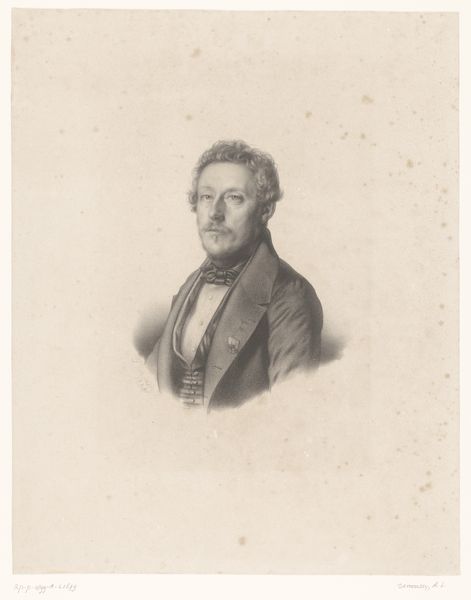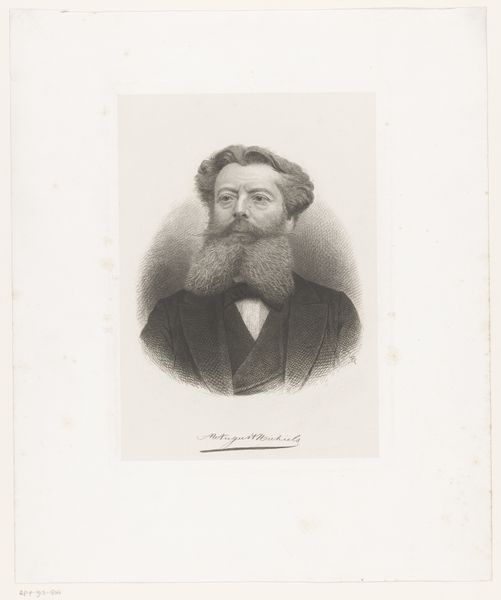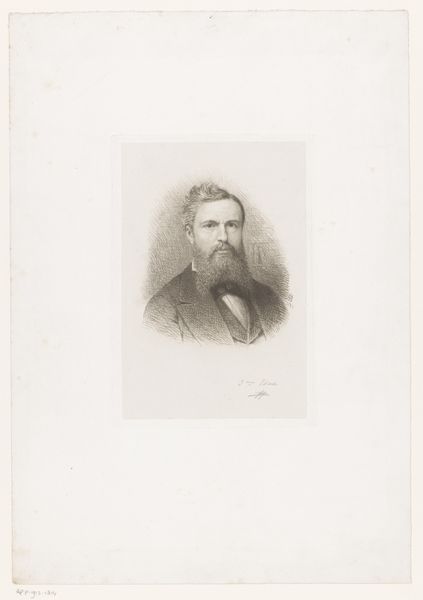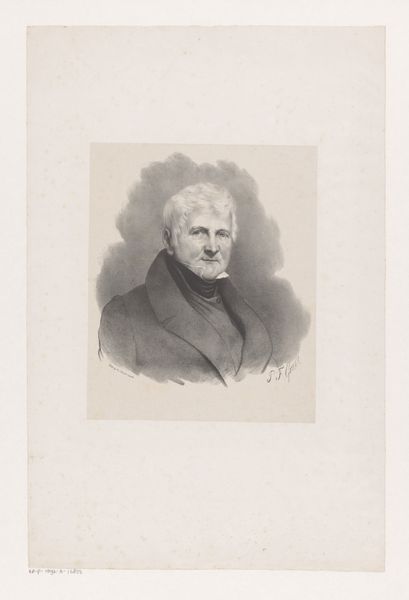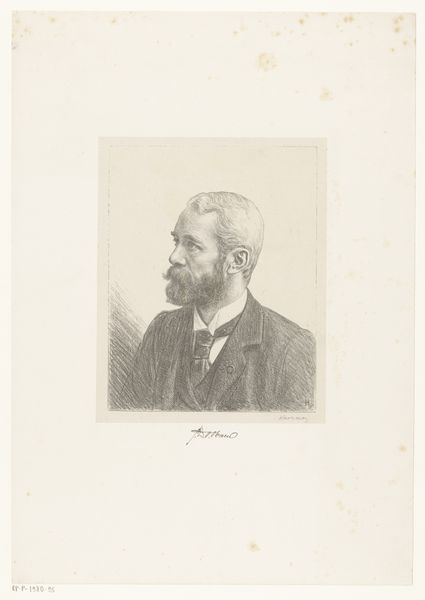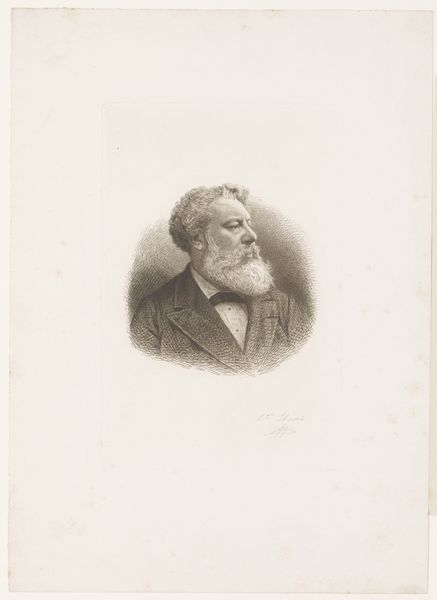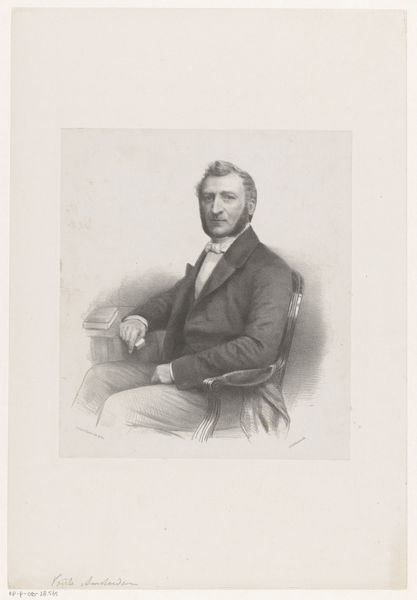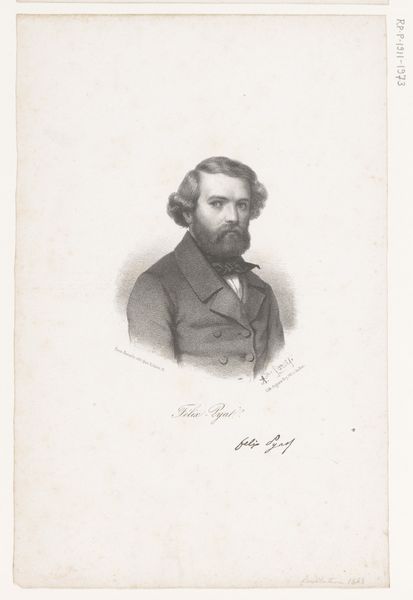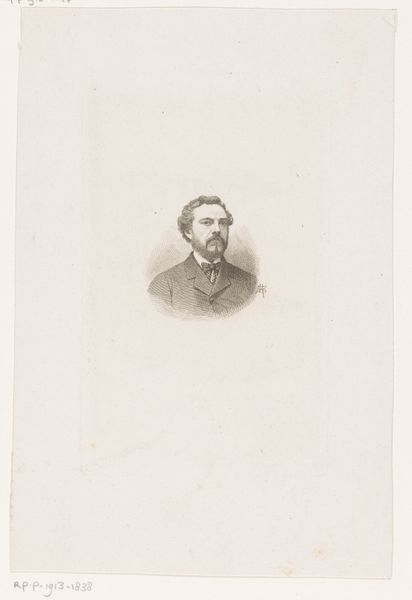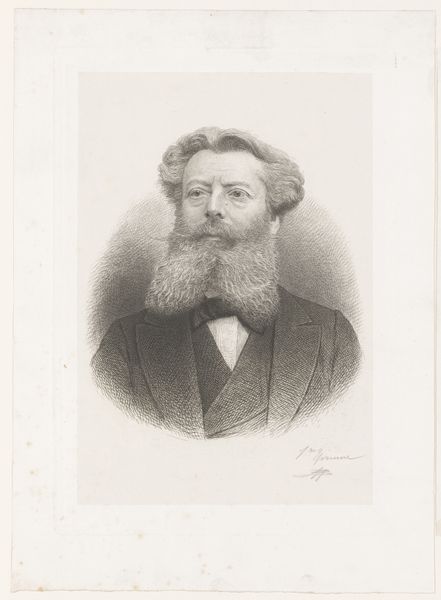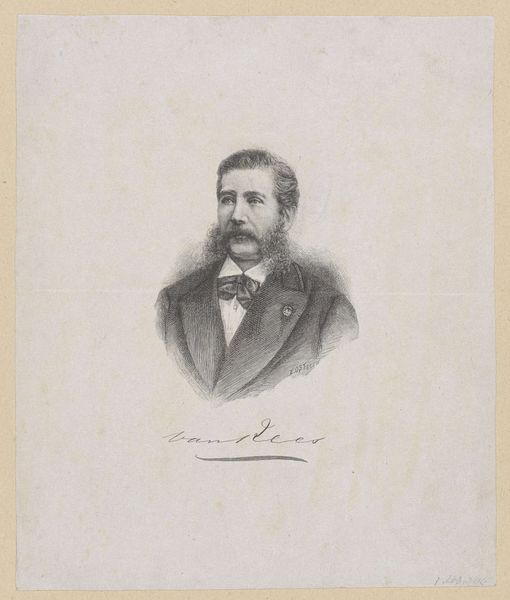
drawing, graphite
#
portrait
#
pencil drawn
#
drawing
#
pencil sketch
#
pencil drawing
#
graphite
#
portrait drawing
#
academic-art
#
realism
Dimensions: height 240 mm, width 157 mm
Copyright: Rijks Museum: Open Domain
Editor: Here we have Jean Baptiste Pierre Michiels' portrait of Jean Pierre François Lamorinière, created around 1880 using graphite. It’s a striking image. There's a real intensity in his gaze. What's your interpretation of this portrait? Curator: It’s fascinating to consider this portrait within the social structures of the late 19th century. Who was represented and why? This is not just a likeness but an assertion of bourgeois identity. Lamorinière, the subject, appears dignified, confident, established. But who had the privilege to be immortalized in art at the time? And what did it signify about power dynamics? Editor: That's interesting. So you see the portrait as a statement about societal privilege. Curator: Exactly. Consider the artistic choices, too. Graphite, while seemingly simple, was a deliberate choice. It allows for precise detail, reinforcing the subject's status. Realism, while striving for objective representation, always carries the biases and perspectives of both the artist and the patron. What do you think about his stern expression? Is it genuine, or is it performative? Editor: I hadn't considered the performative aspect of the expression. It makes you wonder about the relationship between the artist and the sitter, and what they both hoped to convey. Curator: Indeed. Think about how academic art served to reinforce dominant narratives, who controlled those narratives, and who was excluded from them. The portrait becomes a powerful statement. Editor: This gives me a whole new way to look at portraiture. Thanks. Curator: It’s about questioning whose stories get told and how art can perpetuate, or challenge, those structures. Always dig beneath the surface of representation.
Comments
No comments
Be the first to comment and join the conversation on the ultimate creative platform.
